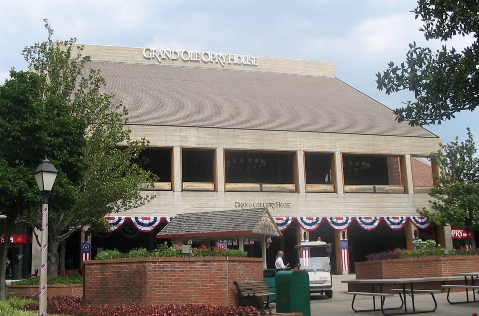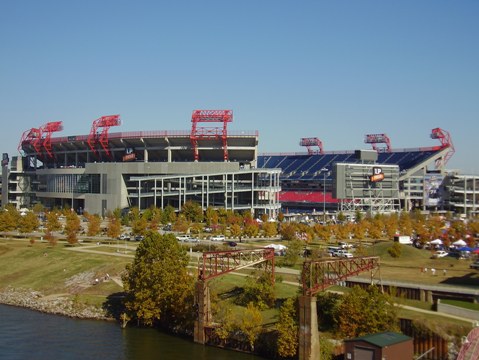|
|
 |

Nashville, Tennessee
Nashville is the capital of the U.S. state of Tennessee and the county seat of Davidson County. It is the second most populous city in the state after Memphis. It is located on the Cumberland River in Davidson County, in the north-central part of the state. Nashville is a major hub for the health care, music, publishing, banking and transportation industries.
Nashville has a consolidated city-county government which includes seven smaller municipalities in a two-tier system. The population of Nashville-Davidson County stood at 619,626 as of 2007, according to United States Census Bureau estimates. The 2007 population of the entire 13-county Nashville Metropolitan Statistical Area was 1,521,437, making it the largest metropolitan area in the state.
Nashville is often labeled the "Athens of the South" due to the many colleges and universities in the city and metropolitan area. The colleges and universities in Nashville include American Baptist College, Aquinas College, The Art Institute of Tennessee, Belmont University, Fisk University, Lipscomb University, Meharry Medical College, Nashville School of Law, Tennessee State University, Trevecca Nazarene University, Vanderbilt University, and Watkins College of Art&Design.
The Tennessee Performing Arts Center is the major performing arts center of the city. It is the home of the Tennessee Repertory Theatre, Nashville Children's Theatre, the Nashville Opera, and Nashville Ballet. In September 2006, the Schermerhorn Symphony Center opened as the home of the Nashville Symphony Orchestra.
Nashville has several professional sports teams, most notably the Nashville Predators of the National Hockey League and the Tennessee Titans of the National Football League. Several other pro sports teams also call Nashville home, as does the NCAA college football Music City Bowl. The Vanderbilt Commodores are members of the Southeastern Conference. The football team of Tennessee State University plays its home games at LP Field.
|
Schermerhorn Symphony Center
| |
At the center of the Schermerhorn Symphony Center is the 30,000 square feet (2,800 m2), 1,872-seat Laura Turner Concert Hall, which is home to the Orchestra. Modeled after the "shoe box design" of storied concert halls such as the Concertgebouw in Amsterdam and the Musikverein in Vienna, the Hall is one of only a few such venues in the world to feature natural lighting, which streams in through 30 soundproof, double-paned windows that ring its upper walls. Intricate symbolic motifs appear throughout the Hall and the rest of the Center, including irises (the Tennessee state flower), horseshoes (a tribute to the late Laura Turner's love of horses) and coffee beans (representing Nashville's Cheek family of Maxwell House fame).
 The Center's neoclassical exterior belies the technological and acoustical advances embodied inside. For example, the orchestra level seats are mounted on several motorized wagons that can be driven forward and lowered through the floor on spiral lifts, revealing an ornate Brazilian cherry and hickory parquet floor and enabling the Hall to be converted from a concert hall into a ballroom in approximately two hours. Further, dozens of motorized acoustic drapes and panels can be quickly adjusted to predetermined positions in order to accommodate many styles of acoustic and amplified music. Finally, those inside the Hall are spared the intrusion of the inevitable downtown noises by an acoustical isolation joint that encircles the entire Hall and prevents sound waves from traveling into or out of the Hall. The Center's neoclassical exterior belies the technological and acoustical advances embodied inside. For example, the orchestra level seats are mounted on several motorized wagons that can be driven forward and lowered through the floor on spiral lifts, revealing an ornate Brazilian cherry and hickory parquet floor and enabling the Hall to be converted from a concert hall into a ballroom in approximately two hours. Further, dozens of motorized acoustic drapes and panels can be quickly adjusted to predetermined positions in order to accommodate many styles of acoustic and amplified music. Finally, those inside the Hall are spared the intrusion of the inevitable downtown noises by an acoustical isolation joint that encircles the entire Hall and prevents sound waves from traveling into or out of the Hall.
|
Sommet Center
| |
Sommet Center is an all-purpose venue in downtown Nashville, Tennessee, that was completed in 1996.
 Sommet Center is owned by the Sports Authority of Nashville and Davidson County and operated by Powers Management Company, a subsidiary of the Nashville Predators National Hockey League franchise, which has been its primary tenant since 1998. The Predators hosted the NHL Entry Draft here in 2003. Sommet Center is owned by the Sports Authority of Nashville and Davidson County and operated by Powers Management Company, a subsidiary of the Nashville Predators National Hockey League franchise, which has been its primary tenant since 1998. The Predators hosted the NHL Entry Draft here in 2003.
The venue has also hosted numerous concerts and religious gatherings, and some major basketball events. Since 2002, it has also hosted a PBR Built Ford Tough Series bull riding event every year.
The Ringling Brothers and Barnum and Bailey Circus appears each January. 
Sommet Center has a seating capacity of 17,113 for ice hockey, approximately 20,000 for basketball, 10,000 for half-house concerts, 18,500 for end-stage concerts and 20,000 for center-stage concerts, depending on the configuration used. It has also hosted several professional wrestling events since its opening.
The arena can be converted into the 5,145-seat Music City Theater, used for theater concerts and Broadway and family shows, by placing a stage at the north end of the arena floor and hanging a curtain behind the stage and another to conceal the upper deck. The arena also features 43,000 square feet of space in a trade show layout.
|
Grand Ole Opry House
| |
The Grand Ole Opry started out as the WSM Barn Dance in the new fifth-floor radio station studio of the National Life & Accident Insurance Company in downtown Nashville on November 28, 1925. On October 18, 1925, management began a program featuring "Dr. Humphrey Bate and his string quartet of old-time musicians." On November 2, WSM hired long-time announcer and program director George D. Hay, an enterprising pioneer from the National Barn Dance program at WLS Radio in Chicago, who was also named the most popular radio announcer in America as a result of his radio work with both WLS in Chicago and WMC in Memphis. Hay launched the WSM Barn Dance with 77 year old fiddler Uncle Jimmy Thompson on November 28, 1925, which is celebrated as the birth date of the Grand Ole Opry.
As audiences to the live show increased, National Life & Accident Insurance's radio venue became too small to accommodate the hordes of fans. They built a larger studio, but it was still not large enough. After several months of no audiences, National Life decided to allow the Opry to move outside its home offices. The Opry moved, in October, 1934, into then-suburban Hillsboro Theatre (now the Belcourt), then, on June 13, 1936, to the Dixie Tabernacle in East Nashville. The Opry then moved to the War Memorial Auditorium, a downtown venue adjacent to the State Capitol. A twenty-five cent admission began to be charged, in part an effort to curb the large crowds, but to no avail. On June 5, 1943, the Opry moved to the Ryman Auditorium.
The Opry was nationally broadcast by the NBC Radio Network from 1944 to 1956; for much of its run, it aired one hour after the program that had inspired it, the National Barn Dance. From October 1955 to September 1956, ABC-TV aired an hour-long television version live from Nashville once a month on Saturday nights, pre-empting one hour of the then-90-minute Ozark Jubilee.
On October 2, 1954, a teenage Elvis Presley made his first (and only) performance there. Although the public reacted politely to his revolutionary brand of rockabilly music, after the show he was told by one of the organizers (Opry manager Jim Denny) that he ought to return to Memphis to resume his truck-driving career, prompting him to swear never to return. In an era when the Grand Ole Opry represented solely country music, audiences did not accept Elvis on the Opry because of his infusion of rhythm and blues as well as his infamous body gyrations, which many viewed as vulgar.
The Ryman was home to the Opry until March 16, 1974, when the show moved to the 4,400-seat Grand Ole Opry House, located nine miles east of downtown Nashville on a former farm in the Pennington Bend of the Cumberland River. The Opry currently plays several times a week at the Grand Ole Opry House except for an annual winter run at the Ryman Auditorium.
|
LP Field
| |
LP Field is a football stadium in Nashville, Tennessee, United States, used primarily as the home stadium of the NFL's Tennessee Titans, but also used as the home football field for the Tennessee State University Tigers. It is also the site of the Gaylord Hotels Music City Bowl, a postseason college football game played each December, and is occasionally used as a venue for soccer matches. LP Field is located on the east bank of the Cumberland River, directly across the river from downtown Nashville. Its seating capacity is slightly under 69,000. Its first event was a preseason game between the Titans and the Atlanta Falcons on August 27, 1999.
LP Field also doubles as a large concert venue, although very few concerts are scheduled there due to attendance at some previously scheduled shows that did not approach capacity and the site's operating arrangements, which make it difficult for concert promoters to make their usual profit margins on events held there. The main stage for the annual CMA Music Festival, held every June, is located in the stadium.
|
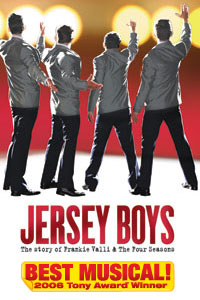
Tennessee Performing Arts Center
The Tennessee Performing Arts Center is the first of its kind in the nation: Owned by a state, but managed by a non-profit organization, giving Tennessee citizens the same opportunities in the performing arts and cultural heritage available to people living in major cities nationwide, introducing school children to the worlds of theater, ballet, symphony and opera, to enhance their education, inspire their imagination, and enrich their lives.
Three professional companies have taken up residence at TPAC: Nashville Opera, Tennessee Repertory Theatre, and Nashville Ballet. Today, the center is booked to near-capacity, presenting up to 500 performances each year, attended by up to 500,000 audience members.
Nashville is now a major market for Broadway tours, while TPAC also presents special engagements of artistic relevance and popular acclaim, ranging from Alvin Ailey American Dance Theater to the magic of David Copperfield, from Dora The Explorer for young audiences to the comedy of Bill Cosby, Penn and Teller, Jerry Seinfeld, and Kathy Griffin.
The performance venues at TPAC are Andrew Jackson Hall (2,472 seats), James K. Polk Theater (1,075), Andrew Johnson Theater (288) and War Memorial Auditorium (1,668), the historic landmark located across 6th Avenue and the plaza from the Center
|
Country Music Hall of Fame
| |
The Country Music Hall of Fame and Museum is located at 222 Fifth Avenue South in Nashville, Tennessee, United States. Its mission is to identify and preserve the evolving history and traditions of country music and to educate its audiences. Functioning as a local history museum and as an international arts organization, the CMF serves visiting and non-visiting audiences including fans, students, scholars, members of the music industry, and the general public - in the Nashville area, the nation, and world.
In 1961, the CMA announced the creation of the Country Music Hall of Fame. In 1963, the CMA announced that a Country Music Hall of Fame and Museum was to be built on Music Row in Nashville. The original Country Music Hall of Fame and Museum opened on Music Row (Music Square East and Division Street) on April 1, 1967. Operations of the museum came to include educational programs, the CMF Press and CMF Records, the Country Music Foundation Library (1968), and the historic sites RCA Studio B (1977) and Hatch Show Print (1986). The Music Row location of the Country Music Hall of Fame and Museum was closed December 31, 2000.
On May 17, 2001, the CMF held the grand opening of its new $37,000,000 facility ten blocks away in downtown Nashville. Inside, the Museum presents its collection to illustrate country music's story as told through the turns of two centuries. Included are historic country video clips and recorded music, as well as a regular menu of live performances and public programs, a museum store, live XM Satellite Radio broadcasts, and on-site dining.

The new building's exterior is laced with symbolic images. The most obvious of these are the windows that mirror the configuration of piano keys. More conspicuous images include the diamond-shaped radio mast, which is a miniaturized replica of the WSM tower located a few miles south of Nashville. The round discs surrounding the tower symbolize the different size records and CDs country music has been recorded upon. When viewed from the air, the building is in the shape of a bass clef. The north-west corner of the building juts out like the tail fin of a 50s Cadillac. The Country Music Hall of Fame was designed by local architecture firm Tuck Hinton Architects and museum design firm Ralph Appelbaum Associates.
The Country Music Hall of Fame and Museum is accredited by the American Association of Museums, certifying that the Museum operates according to the highest standards, manages its collection and provides quality service to the public. Of the 8,000 museums nationwide, only some 750 are accredited.
|
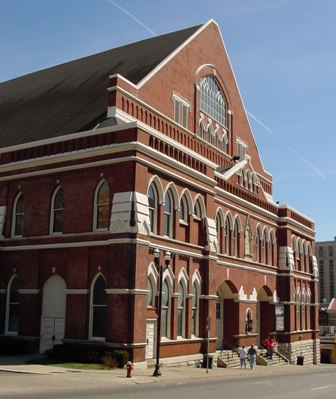
Ryman Auditorium
The Ryman Auditorium is a 2,362-seat live performance venue located at 116 Fifth Avenue North in Nashville, Tennessee, U.S., and is best-known as the one-time home of the Grand Ole Opry.
The auditorium was first opened as the Union Gospel Tabernacle in 1892. It was built by Thomas Ryman (1843–1904), a riverboat captain and Nashville businessman who owned several saloons. Ryman conceived of the auditorium as a tabernacle for the influential revivalist Sam Jones. After Ryman's death, the Tabernacle was renamed Ryman Auditorium in his honor.
It was used for Grand Ole Opry broadcasts from 1943 until 1974, when the Opry built a larger venue just outside Nashville at the Opryland USA theme park. The Ryman then sat mostly vacant and fell into disrepair until 1992, when Emmylou Harris and her band the Nash Ramblers performed a series of concerts there. The Harris concerts renewed interest in the restoring the Ryman; it was reopened as an intimate performance venue and museum in 1994. Audiences at the Ryman find themselves sitting in pews, the 1994 renovation notwithstanding. The seating is a reminder of the auditorium's origins as a house of worship, hence giving it the nickname "The Mother Church of Country Music".
In 2001, the Ryman Auditorium was designated a National Historic Landmark and included in the National Register of Historic Places.
|
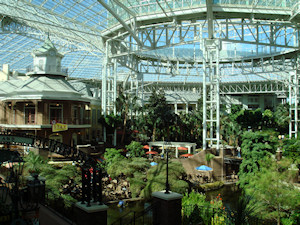
Opryland Hotel
Gaylord Opryland Resort Hotel & Convention Center
Luxury Resort Hotel in Nashville, Tennessee
Gaylord Opryland Resort and Convention Center invites you to experience the energy and excitement of Music City. On the banks of the Cumberland River, this landmark Nashville hotel is just minutes from Nashville International Airport and a short drive or riverboat cruise from downtown Nashville.
Centrally located and close to everything, Gaylord Opryland offers more than any other Nashville hotel—indeed, more than any hotel in the Southeast—when it comes to meetings and conventions. And with more than 600,000 square feet of flexible meeting space, Gaylord Opryland has not only the most plentiful and flexible meeting space of any Nashville hotel... it boasts the largest non-gaming, in-hotel exhibition space in the world.
|
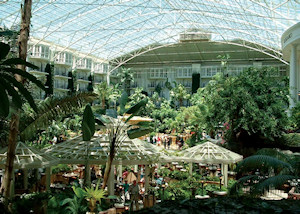
You'll be amazed at the hotel's nine acres of indoor gardens, cascading waterfalls and an indoor river with its own Delta flatboat. Within this lush landscape, you'll discover fine dining and casual restaurants, unique shopping experiences, and a 20,000-square-foot resort spa and fitness center. And for late-night excitement, check out our latest entertainment adventure, Fuse Nightclub.
This luxurious Nashville hotel is a true resort, and it's the flagship property of the Gaylord Hotels family. It features 2,881 stylish guest rooms, including 174 spectacular suites. Every room features high-speed wireless Internet access and two phones, including one cordless.
|
|
|
|
|
|
|
 |
|
|

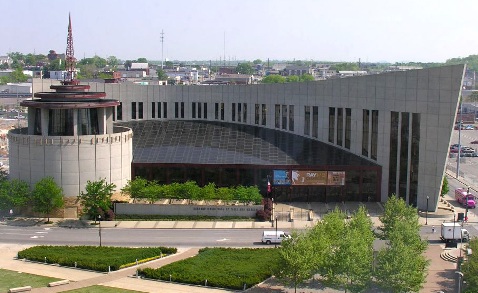

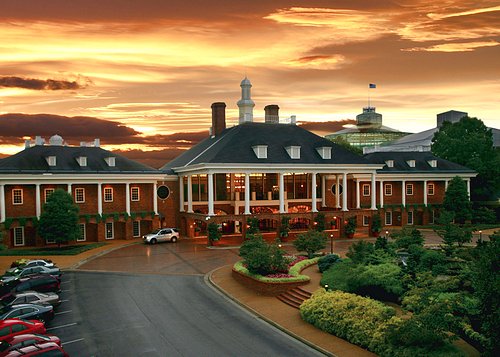


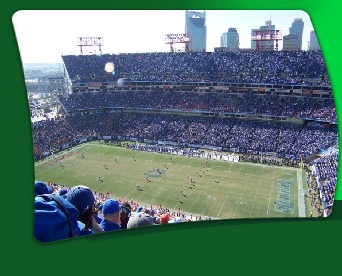





























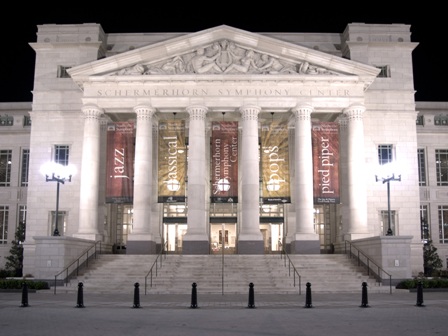
 The Center's neoclassical exterior belies the technological and acoustical advances embodied inside. For example, the orchestra level seats are mounted on several motorized wagons that can be driven forward and lowered through the floor on spiral lifts, revealing an ornate Brazilian cherry and hickory parquet floor and enabling the Hall to be converted from a concert hall into a ballroom in approximately two hours. Further, dozens of motorized acoustic drapes and panels can be quickly adjusted to predetermined positions in order to accommodate many styles of acoustic and amplified music. Finally, those inside the Hall are spared the intrusion of the inevitable downtown noises by an acoustical isolation joint that encircles the entire Hall and prevents sound waves from traveling into or out of the Hall.
The Center's neoclassical exterior belies the technological and acoustical advances embodied inside. For example, the orchestra level seats are mounted on several motorized wagons that can be driven forward and lowered through the floor on spiral lifts, revealing an ornate Brazilian cherry and hickory parquet floor and enabling the Hall to be converted from a concert hall into a ballroom in approximately two hours. Further, dozens of motorized acoustic drapes and panels can be quickly adjusted to predetermined positions in order to accommodate many styles of acoustic and amplified music. Finally, those inside the Hall are spared the intrusion of the inevitable downtown noises by an acoustical isolation joint that encircles the entire Hall and prevents sound waves from traveling into or out of the Hall.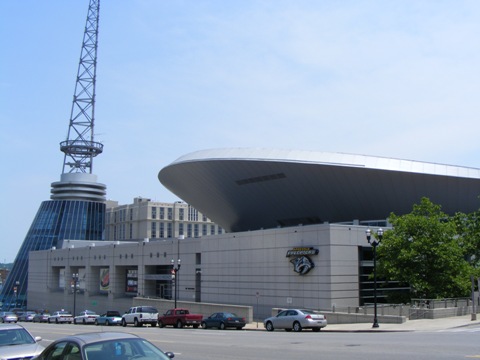
 Sommet Center is owned by the Sports Authority of Nashville and Davidson County and operated by Powers Management Company, a subsidiary of the Nashville Predators National Hockey League franchise, which has been its primary tenant since 1998. The Predators hosted the NHL Entry Draft here in 2003.
Sommet Center is owned by the Sports Authority of Nashville and Davidson County and operated by Powers Management Company, a subsidiary of the Nashville Predators National Hockey League franchise, which has been its primary tenant since 1998. The Predators hosted the NHL Entry Draft here in 2003.
